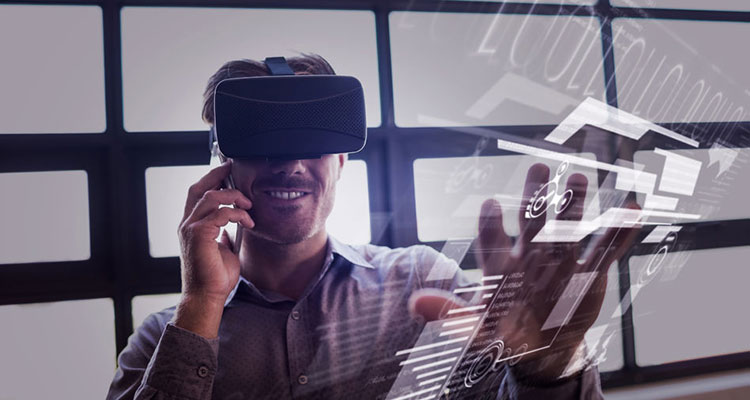Augmented Reality Will Change Our Industry
 In my last column, I wrote about how virtual reality will offer amazing opportunities for integrators working in higher ed. A few days after I finished, I read an article that made me think about how augmented reality will change the basic functions of our industry. The article is titled “Why Every Organization Needs an Augmented Reality Strategy” and appeared in the November 2017 issues of Harvard Business Review. This was one of the best articles I have read about the impact of augmented reality. Take a few minutes and read it. After reading it, you will know that If you run any type of business: integration, design, support services or manufacturing, you will be impacted by augmented reality. Taking a cue from the article, here are some ways I think we will be affected, sooner than later.
In my last column, I wrote about how virtual reality will offer amazing opportunities for integrators working in higher ed. A few days after I finished, I read an article that made me think about how augmented reality will change the basic functions of our industry. The article is titled “Why Every Organization Needs an Augmented Reality Strategy” and appeared in the November 2017 issues of Harvard Business Review. This was one of the best articles I have read about the impact of augmented reality. Take a few minutes and read it. After reading it, you will know that If you run any type of business: integration, design, support services or manufacturing, you will be impacted by augmented reality. Taking a cue from the article, here are some ways I think we will be affected, sooner than later.
In the article, Michael Porter writes about the visualization effects of AR. In the AV industry, we will see this soon with installs. A problem that currently exists with installs is that the installer needs to look at a design schematic and translate that to the physical reality in front of them. This is where many mistakes are made — in that translation. By implementing AR, installers will be able to look at the boxes in a room and the device will decode the barcodes on them. The box that they need at that moment will be highlighted by the VR. Then when they turn to the rack, AR shows them where in the rack that specific piece of equipment goes, based on a rack elevation drawing done by the designer. Finally, as they wire the rack, they see the images of where all the various connections plug in. This prevents any translation mistakes from the drawing to the physical reality.
Troubleshooting is another area where AR will prove to be extremely useful. This is both during and after installation. By looking at the equipment, the installer will be able to see all the information that they currently need to read on a computer. Is a video connection receiving signal? What level is a certain audio input set at? Additionally, changing any of these settings will be done by hand motions. A virtual volume dial will be able to be turned to tune the settings perfectly. The installer will be able to make these changes walking throughout the space, without carrying a computer. By implementing AR, installation companies will be able to save money by cutting down on errors and possibly reducing the number of staff required on an install site. Requirements for the designer to be on site will be reduced as the designer will be able to view the exact install and current settings, as though they were standing in the room, if the installer has any questions or needs to make any changes.
Providing a support service also is enhanced with AR. Imagine being able to walk into a space for a trouble call. By looking around the room, at the projector, at the touch panel and at the rack, you can get readings on settings and signals.
Documentation is another opportunity for improved services and lower costs. Since all the equipment is being recorded virtually as it is installed, there is no need to document changes after the install. This prevents future problems when those updates were forgotten to be made to the final drawings. Serial numbers, ownership tags, models, etc. will all automatically be recorded through the AR system.
As the article mentions, the biggest hurdle right now is the cost, awkwardness and availability of augmented reality lenses. These systems have decreased in cost and size dramatically, even in the past two years and there is no reason to expect this decrease won’t continue. The AV industry has a head start in this area, as we should be very familiar and experienced with the current AR equipment. The second hurdle is getting all the information into a digital format. Again, we have a head start in this area. Every integrator and manufacturer has digital drawings of their installs and equipment. To integrate this into an augmented reality view will become an easier lift because of this head start.
These are just a few of the ideas on how our industry will be drastically changed by augmented reality. Firms who begin to prepare for these changes will be ready to take advantage of them when they become more and more mainstream.





